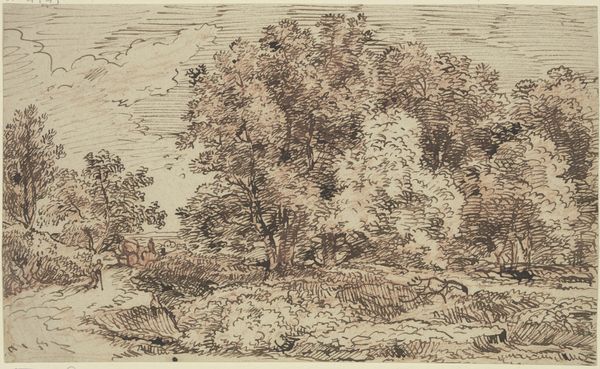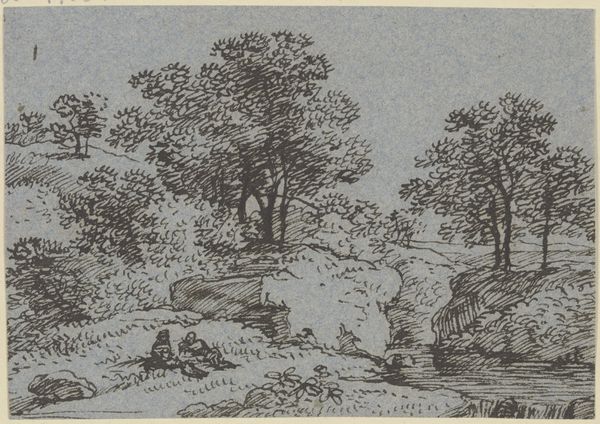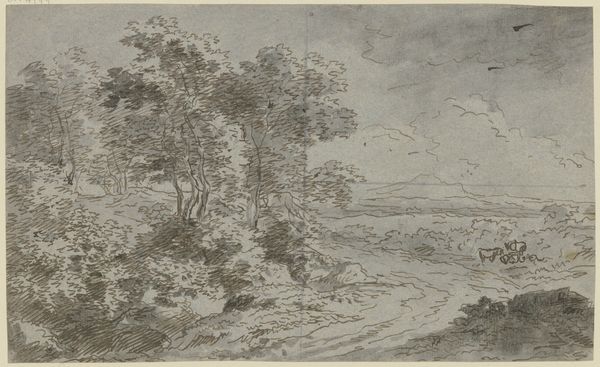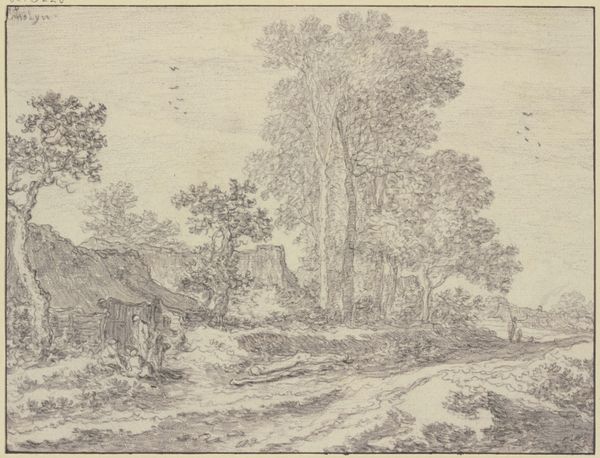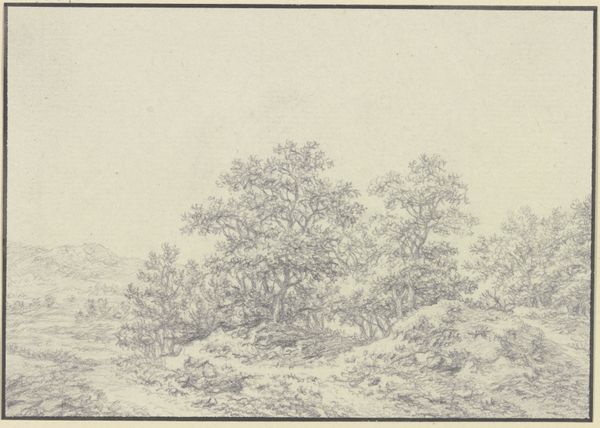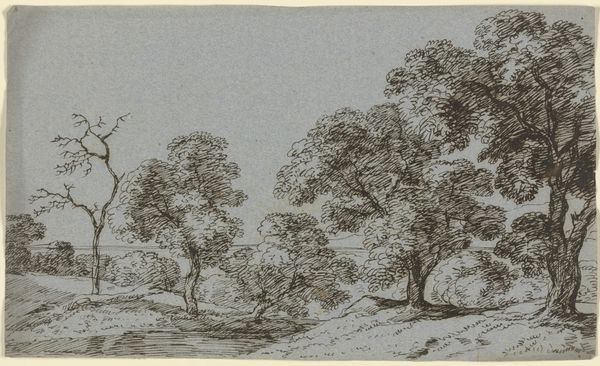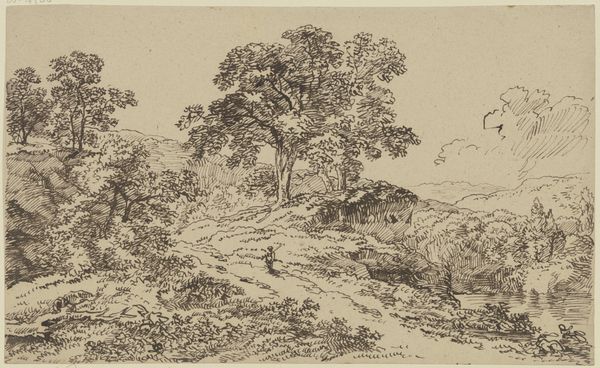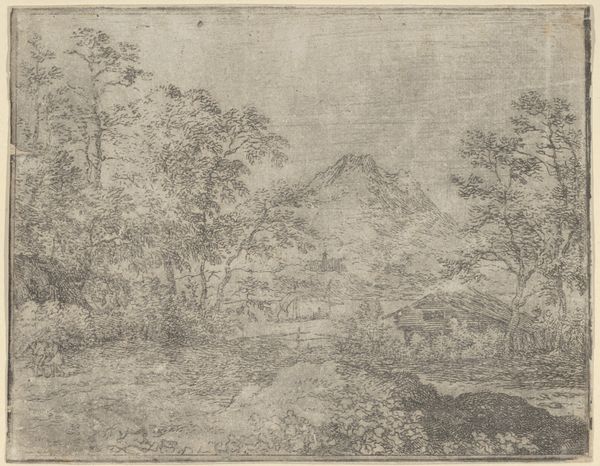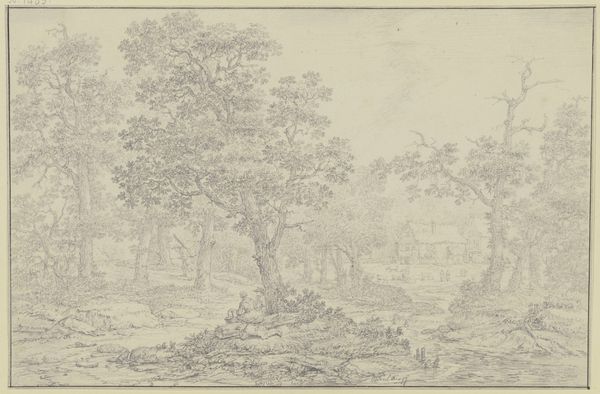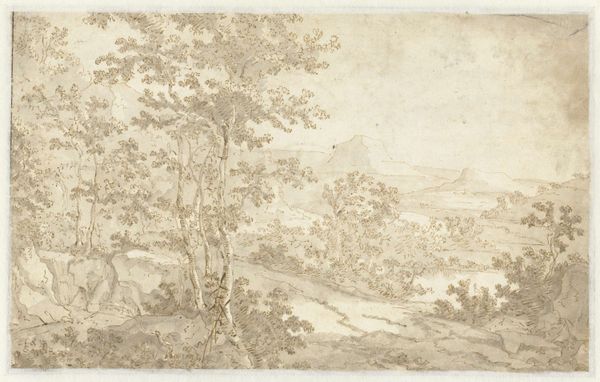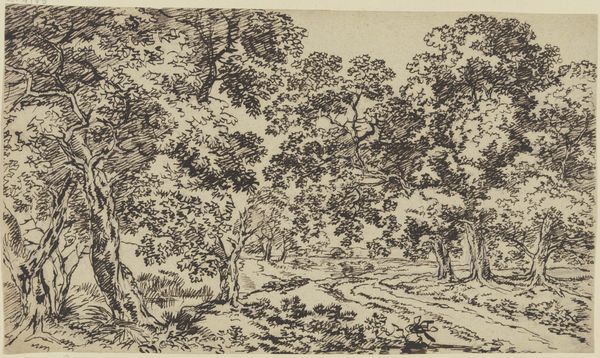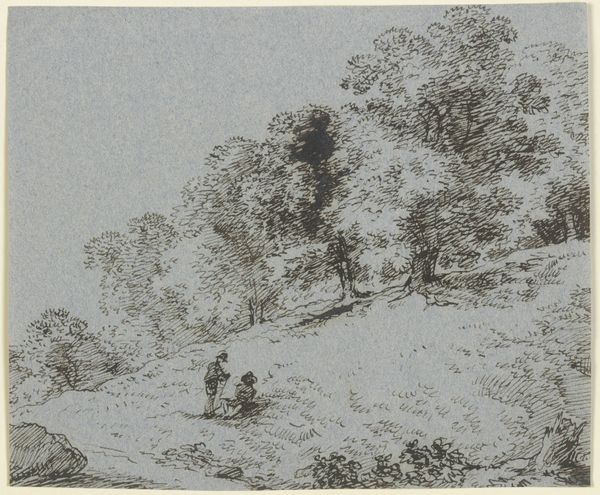
drawing, etching, ink, pencil
#
drawing
#
pen sketch
#
etching
#
landscape
#
etching
#
ink
#
pencil
Copyright: Public Domain
Editor: We're looking at "Waldrand mit Ausblick über eine baumbestandene Ebene," or "Woodland Edge with a View over a Wooded Plain," by Franz Kobell, using pencil, ink and etching. It has a quiet, observant feel. What's your take on this seemingly simple landscape? Curator: This piece invites us to consider landscape not just as a scenic vista, but as a site of social and historical meaning. What stories does the land hold, and for whom? Who has access to this view? Kobell was working during a period of significant social upheaval and the rise of Romanticism. The rendering feels almost clinical; what might this reveal about the artist's, and perhaps the broader culture's, relationship with nature? Do we see nature as something separate from us? Editor: I see your point. I hadn't considered how "objective" it feels. I was too caught up in the nice light. Curator: Precisely. Consider also the almost scientific quality of the meticulous mark-making. How does it reinforce a particular view of nature, perhaps one of control and documentation? The landscape has long been used as a proxy for ideas about nationhood and belonging. It begs the question: what political work is landscape imagery doing? What are your thoughts on that aspect? Editor: Well, maybe it's a romanticized view obscuring social realities? Curator: Yes, maybe. By looking at this image, can we understand a broader historical context? Also, thinking about the materiality – pencil, ink, etching - do they reinforce this idea? It is important for us to analyze and see this from multiple perspectives to be more rounded as viewers. Editor: I see the landscape genre differently now! I hadn't considered the inherent power dynamics. Curator: Exactly! Art like this opens pathways. And that's where the real richness lies.
Comments
No comments
Be the first to comment and join the conversation on the ultimate creative platform.
